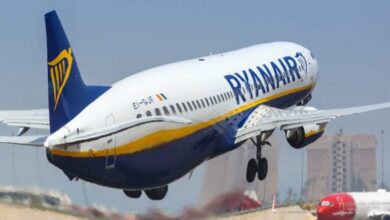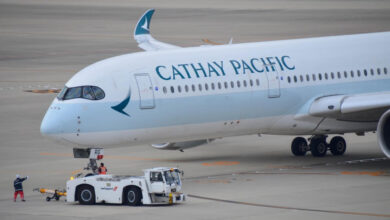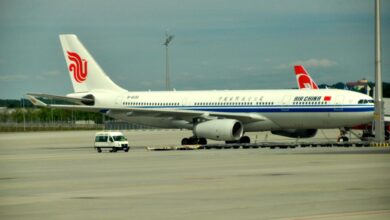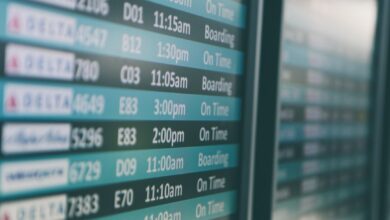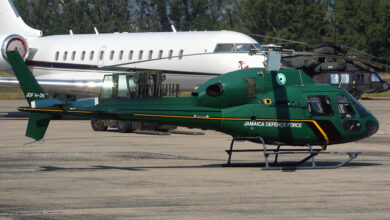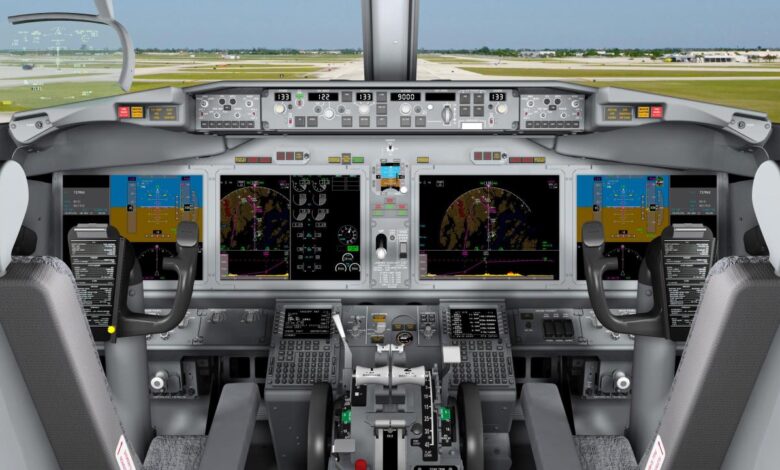
Buzzing About Boeing Flight Decks A Deep Dive
Buzzing about Boeing flight decks, this exploration delves into the intricate world of aviation technology. From the evolution of cockpit designs to the integration of cutting-edge avionics, we’ll examine the multifaceted aspects of these crucial command centers. We’ll also explore the pilot training, public perception, safety measures, and future innovations shaping the future of flight.
The Boeing flight deck, a marvel of engineering, is constantly evolving. This article provides a comprehensive overview, examining the technological advancements, training procedures, and public discussions surrounding these critical components of modern aircraft. Expect to learn about the history, current features, and potential future trends in Boeing flight decks.
Overview of Boeing Flight Decks
Boeing’s flight decks are renowned for their sophistication and evolution. From the early days of jet travel to the modern era, Boeing has consistently pushed the boundaries of cockpit design, prioritizing pilot efficiency and safety. This evolution is a testament to the company’s commitment to innovation and adapting to changing aviation needs. This exploration delves into the key features, functionalities, and advancements that have shaped the Boeing flight deck.Modern Boeing cockpits are characterized by advanced displays, integrated systems, and intuitive controls.
These improvements aim to reduce pilot workload, enhance situational awareness, and ensure safer operations. The layout and technology have undergone significant transformations over the years, directly reflecting technological advancements and evolving aviation regulations.
Current Boeing Flight Deck Designs
Modern Boeing flight decks emphasize a glass cockpit approach. This means that traditional instrument panels are replaced with large, multi-function displays (MFDs). These displays present crucial flight data, navigational information, and system status in a clear and organized format. This allows pilots to quickly access and process critical information, leading to improved situational awareness.
Key Features and Functionalities
Pilots benefit from advanced avionics systems, which provide real-time information on critical aspects of flight operations. Integrated flight management systems (FMS) simplify complex tasks like navigation and flight planning. Modern flight decks also utilize advanced communication systems and weather radar, enhancing overall safety and efficiency.
Evolution of Boeing Flight Decks
Boeing flight decks have evolved dramatically since the introduction of the first jetliners. Early models featured analog instruments and relatively simple control systems. The introduction of digital avionics, starting with the Boeing 737 Next Generation, marked a significant shift toward automation and increased pilot efficiency. The 787 Dreamliner’s flight deck represents the pinnacle of modern cockpit design, featuring advanced systems and integrated displays.
Examples of Different Boeing Aircraft Models and Their Flight Deck Layouts
- Boeing 737 MAX: This popular model showcases a modern glass cockpit layout, featuring large displays and integrated systems. The 737 MAX incorporates advanced automation features, which are designed to enhance pilot efficiency and reduce workload.
- Boeing 777: Known for its long-range capabilities, the 777 features a sophisticated flight deck layout optimized for extended flights. The displays and controls are designed to provide pilots with comprehensive information and efficient control over the aircraft’s systems.
- Boeing 787 Dreamliner: The 787 Dreamliner exemplifies the latest in cockpit technology. The advanced avionics, including the integrated flight deck displays and controls, reduce pilot workload and increase safety during complex flight operations. The 787’s flight deck is designed to be intuitive and user-friendly, offering enhanced efficiency for long-haul flights.
Technological Advancements in Flight Decks
Boeing flight decks have undergone a dramatic transformation, moving from analog to digital systems, enhancing pilot capabilities and safety. This evolution has been driven by the need for improved situational awareness, more efficient workflows, and increased automation to meet the demands of modern air travel. The integration of advanced technologies has resulted in a significant shift in how pilots interact with aircraft systems.The digitalization of Boeing flight decks has fundamentally changed the pilot experience, moving from a reliance on physical gauges and controls to a highly integrated digital environment.
This transition has brought with it a host of benefits, including improved precision, reduced workload, and enhanced safety. Pilots now have access to a wealth of information at their fingertips, enabling them to make more informed decisions and react more effectively to unexpected situations.
Avionics Integration
The integration of advanced avionics systems is a hallmark of modern Boeing flight decks. These systems encompass a wide range of functionalities, from navigation and communication to flight control and performance monitoring. The seamless integration of these components allows for a more comprehensive and integrated picture of the aircraft’s status, enhancing situational awareness and enabling proactive responses to potential issues.
The sophisticated algorithms within these avionics systems provide crucial support to pilots, helping them to manage complex flight scenarios with greater efficiency and precision.
Displays and Human-Machine Interface
Modern Boeing flight decks feature sophisticated displays that provide pilots with critical information in a clear and concise manner. These displays are designed to be intuitive and user-friendly, reducing pilot workload and promoting faster decision-making. Multi-function displays (MFDs) consolidate various data sources, presenting information in a unified format, enabling pilots to quickly grasp the overall situation. This simplification of data presentation and the intuitive design of the displays has significantly improved pilot efficiency and reduces cognitive load.
Everyone’s buzzing about Boeing flight decks these days, with new designs and features. Meanwhile, a fascinating bill in congress would recognize cruise sellers, potentially streamlining the industry. This could impact everything from booking processes to customer service, ultimately benefiting travelers. Back to Boeing, the innovations are exciting, and this recognition of cruise sellers seems like a separate but related positive change impacting the travel industry.
Impact on Pilot Workflows
The digitalization of flight decks has profoundly impacted pilot workflows. With the elimination of many traditional analog instruments, pilots now rely on digital displays and controls for nearly all aspects of flight. This has led to a reduction in the number of physical controls and an increase in the use of touchscreens and other interactive interfaces. Consequently, pilots are now able to access and process information much faster, enabling more efficient flight operations and quicker responses to unforeseen circumstances.
The streamlined workflows facilitated by digitalization have resulted in reduced pilot fatigue and increased safety.
Comparison of Older and Newer Flight Decks
Older Boeing flight decks relied heavily on analog instruments, such as gauges and dials, which required pilots to constantly monitor multiple sources of information. In contrast, newer flight decks use digital displays to present a consolidated view of aircraft status, greatly reducing pilot workload and enhancing situational awareness. The transition from analog to digital systems has also improved the precision of data presentation, contributing to more accurate flight management.
The reduction in the number of physical controls simplifies the flight deck layout, leading to improved ergonomics and reduced pilot fatigue.
Automation in Modern Cockpits
Automation plays a vital role in modern Boeing flight decks. Advanced automation systems handle various tasks, from flight control and navigation to engine management and communication. This automation relieves pilots from mundane tasks, allowing them to focus on higher-level decision-making and crucial monitoring. The systems are designed to support, not replace, the pilot, ensuring that human oversight remains critical in all operational phases.
Everyone’s buzzing about Boeing flight decks these days, but have you heard about the American Queen Ocean Victory? This ship is really winning points for its adventure focus, offering unique excursions and activities. It’s a great alternative for those seeking something more than your typical cruise, and it’s got me thinking about how those innovative flight decks are really designed for a whole different kind of adventure.
Maybe we’ll see some similar forward-thinking design features in future Boeing flight decks. american queen ocean victory wins points for adventure focus
Examples include autopilot systems for flight control, and automated systems for engine monitoring and maintenance. Modern automation systems have significantly reduced the workload on pilots, enhancing safety and operational efficiency.
Pilot Training and Certification
Pilots operating Boeing aircraft undergo rigorous training programs and certification processes, reflecting the complexity and safety-critical nature of modern flight decks. These programs are constantly updated to keep pace with technological advancements, ensuring pilots are equipped to handle the latest avionics and systems. The training is designed to not only teach procedures but also to cultivate critical thinking and decision-making skills essential for handling unexpected situations.Boeing flight deck training is a multifaceted endeavor encompassing theoretical knowledge, practical simulations, and real-world flight experience.
The certification process ensures that pilots meet stringent standards before operating these sophisticated aircraft, guaranteeing passenger safety.
Boeing Pilot Training Programs
The training programs for Boeing pilots are extensive and involve a structured curriculum encompassing classroom instruction, simulator training, and flight experience. A robust theoretical foundation is established, covering aircraft systems, navigation, and flight regulations. Practical application through simulator training is crucial to familiarize pilots with the nuances of the Boeing flight deck, including the operation of advanced avionics and systems.
Pilot Certification Processes
The certification process for Boeing pilots adheres to strict standards and regulations. This involves passing a series of examinations covering various aspects of flight operations, including theoretical knowledge, practical skills, and regulatory compliance. A crucial component is demonstrating proficiency in handling simulated and real-world scenarios. Successful completion of these assessments earns the pilot the necessary certifications to operate Boeing aircraft.
The FAA (Federal Aviation Administration) and other international aviation authorities play a crucial role in setting and enforcing these standards.
Continuous Training and Updates
Technological advancements in aviation necessitate continuous training and updates for pilots. New avionics, flight management systems, and procedures demand that pilots adapt to these changes. Regular updates and training programs address these advancements, ensuring pilots remain proficient in handling the evolving technology on the Boeing flight decks. This continuous learning cycle allows pilots to stay ahead of the curve, maintain their expertise, and contribute to the safety of operations.
Specific Training Scenarios and Procedures
Numerous training scenarios are employed to prepare pilots for various flight situations. These include simulated emergencies, such as engine failures, instrument malfunctions, and weather-related challenges. Understanding and responding effectively to these scenarios is a key part of pilot training. Detailed procedures are taught for navigating these critical situations, often emphasizing teamwork and communication among the cockpit crew.
For example, a simulated approach and landing in instrument meteorological conditions (IMC) is a common exercise, highlighting the importance of following checklists and relying on instruments during challenging conditions.
Public Perception and Discussion
The public’s perception of Boeing flight decks is multifaceted, influenced by factors ranging from safety concerns to technological advancements. Public discourse often centers on the complexity of modern flight deck systems, the role of automation, and the training required for pilots. This scrutiny is a natural consequence of the immense responsibility associated with these complex systems and the potential for human error.
Public Reactions to Flight Deck Updates
Public reactions to Boeing flight deck updates vary widely. Positive responses often highlight improved safety features and enhanced efficiency. However, concerns about the increased reliance on automation and the potential for system failures are also frequently voiced. The complexity of these updates, coupled with the inherent risk involved in aviation, often generates a cautious yet curious public response.
News reports on Boeing flight deck upgrades often elicit discussions about pilot training, the impact on job security, and the broader implications for aviation safety.
Emerging Trends and Concerns
Emerging trends in public discussion include a growing awareness of the role of automation in flight deck operations. This has sparked debate about the extent of automation’s involvement and the need for adequate pilot training to manage these systems effectively. Concerns are also raised about the potential for human-machine interaction errors and the need for robust safety protocols to mitigate these risks.
Furthermore, discussions about the ethical considerations of advanced flight deck technologies, including the use of artificial intelligence, are gaining traction. For instance, the public often wonders about the ability of AI systems to handle unexpected situations and the level of oversight required from human pilots.
Comparison of Public Opinions on Boeing Flight Deck Models
| Flight Deck Model | Common Public Concerns | Common Public Praise |
|---|---|---|
| Boeing 787 Dreamliner | Initial concerns about the complexity of the integrated systems and the potential for system failures, as well as the need for rigorous pilot training and maintenance procedures. | Praise for the efficiency and fuel economy of the aircraft, and the modern and user-friendly layout, despite initial complexity. |
| Boeing 777X | Concerns about the aircraft’s larger size and complexity, potentially leading to more intricate flight deck operations and the need for advanced pilot training. Some public apprehension about the advanced automation systems. | High praise for the aircraft’s long-range capability and potentially improved safety features, though the initial implementation may have had some public concern. |
| Older Boeing Models (e.g., 737NG, 747) | Concerns about the lack of integration and modernization of systems, possibly leading to issues in a more complex aviation environment. | Public recognition of the reliability and safety record of these models, often built on decades of experience and proven safety records. |
This table highlights a common pattern. Public opinion on newer models often involves a period of cautious observation and discussion, while older models, despite their potential limitations, benefit from a history of proven safety and reliability.
Safety and Reliability
Boeing flight decks are meticulously designed with safety as a paramount concern. The integration of redundant systems, fail-safe mechanisms, and comprehensive pilot training programs contribute significantly to the unparalleled safety record of Boeing aircraft. This focus on safety extends from the initial design phase through rigorous testing and maintenance protocols.The reliability of Boeing flight deck systems is critical to ensuring safe operation.
Redundancy in crucial components, such as flight control systems and engine management systems, mitigates the risk of catastrophic failures. Highly sophisticated maintenance procedures and protocols, combined with the availability of advanced diagnostic tools, enable prompt identification and resolution of potential issues.
Safety Features Integrated into Boeing Flight Decks
Boeing flight decks incorporate a multitude of safety features, creating a robust and resilient cockpit environment. These features are designed to prevent errors and minimize the impact of potential malfunctions.
- Redundant Systems: Many critical systems, such as flight control and hydraulic systems, feature redundant components. If one system fails, the backup system automatically takes over, maintaining critical functionality. This redundancy significantly reduces the risk of catastrophic failures and enhances the safety of the flight.
- Fail-Safe Mechanisms: Flight deck systems are equipped with fail-safe mechanisms that prevent dangerous situations from escalating. These mechanisms automatically activate safety procedures when specific conditions are detected. Examples include automatic engine shutdowns in the event of a detected malfunction and emergency braking systems.
- Advanced Warning Systems: Modern Boeing flight decks include advanced warning systems that provide pilots with early indications of potential problems. These systems use sensors and data analysis to alert pilots to potential issues before they become critical, allowing for proactive mitigation strategies.
Reliability and Maintainability of Boeing Flight Deck Systems
Boeing flight deck systems are designed for exceptional reliability and maintainability. These characteristics are crucial for ensuring the safety and efficiency of aircraft operations.
- Robust Design: The design of Boeing flight decks emphasizes durability and resistance to various environmental stresses. This includes factors such as extreme temperatures, vibrations, and pressure changes.
- Comprehensive Maintenance Programs: Boeing offers comprehensive maintenance programs to ensure the reliability of flight deck systems. These programs involve regular inspections, component replacements, and calibration procedures to maintain optimal performance and safety standards.
- Advanced Diagnostic Tools: Boeing utilizes advanced diagnostic tools to identify potential issues early in the maintenance cycle. These tools allow for proactive maintenance and minimize downtime.
Examples of Safety Procedures Implemented in Boeing Cockpits
Specific safety procedures are embedded in the design of Boeing cockpits to enhance safety protocols. These procedures are regularly reviewed and updated to reflect the latest advancements in aviation safety.
- Crew Resource Management (CRM): Boeing emphasizes CRM training to enhance communication and decision-making processes among crew members. Effective CRM protocols minimize errors and ensure efficient response to unexpected events.
- Emergency Procedures: Comprehensive emergency procedures are Artikeld and meticulously practiced to ensure crew members can react effectively to various scenarios, from engine failures to cabin depressurization. These procedures are clearly displayed and readily accessible within the cockpit.
- Pilot Training: Boeing emphasizes rigorous pilot training programs to ensure pilots are proficient in operating the complex flight deck systems and adhering to safety procedures.
Safety Records of Various Boeing Aircraft Models
A robust safety record is a testament to the effectiveness of Boeing’s design, manufacturing, and operational practices.
| Aircraft Model | Accident Rate (per 100 million flight hours) |
|---|---|
| 737 MAX | Data is still being collected and analyzed |
| 787 Dreamliner | Data available on various websites showing lower rates than other models |
| 777 | Data available on various websites showing lower rates than other models |
| 747 | Data available on various websites showing lower rates than other models |
Note: Data on accident rates is often subject to ongoing analysis and may vary depending on the source and the period considered.
Future Trends and Developments: Buzzing About Boeing Flight Decks
The future of Boeing flight decks is poised for a dramatic transformation, driven by advancements in technology and the ever-increasing need for safer, more efficient, and user-friendly cockpits. This evolution will fundamentally change how pilots interact with aircraft systems, impacting everything from training to operational procedures. Predicting the exact trajectory is challenging, but by analyzing current trends and emerging technologies, we can glimpse a compelling picture of the future of Boeing flight decks.The integration of advanced automation systems, sophisticated displays, and enhanced connectivity will be key drivers in this evolution.
While everyone’s buzzing about Boeing flight decks, I’m currently dreaming of attentive elegance at secluded recreo resort in Costa Rica. The meticulously crafted details and tranquil atmosphere at attentive elegance at secluded recreo resort in Costa Rica are truly inspiring, a welcome change from the intricate engineering marvels of the aviation world. It’s a reminder that even the most advanced technology can’t quite match the sheer beauty of nature, and that buzzing about boeing flight decks can take a back seat sometimes.
This integration will push the boundaries of what is possible in aviation, leading to a more streamlined and less demanding flight experience. This transition will not be without its challenges, demanding careful consideration of pilot training and certification processes, as well as the impact on existing infrastructure and operational procedures.
Automation and AI Integration
Boeing flight decks are increasingly incorporating automated systems for various tasks. This automation, ranging from enhanced autopilot functions to predictive maintenance capabilities, promises significant benefits in terms of efficiency and safety. Future flight decks will likely feature even more sophisticated AI-powered systems capable of proactive decision-making in response to real-time data and potential threats. For example, systems could anticipate potential mechanical failures or weather patterns and proactively adjust flight plans or recommend maintenance actions.
Everyone’s buzzing about the new Boeing flight decks, and rightfully so. But amidst all the excitement, there’s another big story brewing in the aviation world. Recently, Ambassadors sold their marine division, a move that certainly impacts the broader industry. ambassadors sells marine division might not seem directly related, but it highlights the shifting landscape of global transportation, which ultimately has an effect on the future of aviation and Boeing’s position in the market.
Still, the buzz surrounding the flight decks is undeniable.
Enhanced Displays and Human-Machine Interfaces
Future cockpits will see a dramatic shift in the way pilots interact with aircraft systems. Advanced displays will be more intuitive and interactive, using augmented reality (AR) and virtual reality (VR) technologies to overlay critical information directly onto the pilot’s field of vision. This intuitive interface will enhance situational awareness, allowing pilots to quickly access and process vast amounts of data, thereby reducing cognitive load.
For instance, AR overlays could display critical flight parameters, weather data, and even 3D models of surrounding obstacles in real time, directly within the pilot’s field of view.
Connectivity and Data Management
The future of flight decks will involve seamless connectivity and advanced data management systems. Pilots will have access to real-time data from various sources, including weather forecasts, air traffic control information, and even external sensor networks. This connectivity will enable predictive maintenance, optimized flight paths, and real-time threat assessment, enhancing both safety and efficiency. Imagine a scenario where the aircraft’s systems communicate with each other and with external data sources, allowing pilots to proactively adjust their flight plans based on the most up-to-date information.
Potential Future Features
- Predictive Maintenance Systems: These systems will analyze aircraft data to anticipate potential maintenance needs, reducing downtime and improving reliability. This will likely be integrated into the flight deck’s displays, providing pilots with proactive maintenance recommendations based on historical and real-time data.
- Enhanced Situational Awareness: Cockpits will feature integrated displays providing a comprehensive view of the aircraft’s surroundings, including traffic, weather, and terrain. This will enable pilots to anticipate potential hazards and make more informed decisions.
- Advanced Autopilot and Flight Management Systems: These systems will handle more complex flight tasks, enabling pilots to focus on higher-level decision-making. This will result in improved efficiency and potentially reduced pilot workload in routine flight segments.
Challenges and Opportunities
Developing advanced flight decks presents significant challenges, including ensuring seamless integration of new technologies, maintaining pilot proficiency, and addressing potential cybersecurity risks. The opportunities, however, are substantial. They include increased operational efficiency, enhanced safety, and a more user-friendly cockpit experience. One example of a challenge is the need to adapt existing pilot training programs to incorporate the use of these new technologies, while opportunities include enhanced safety features, improved situational awareness, and reduced pilot workload.
Maintenance and Upgrades
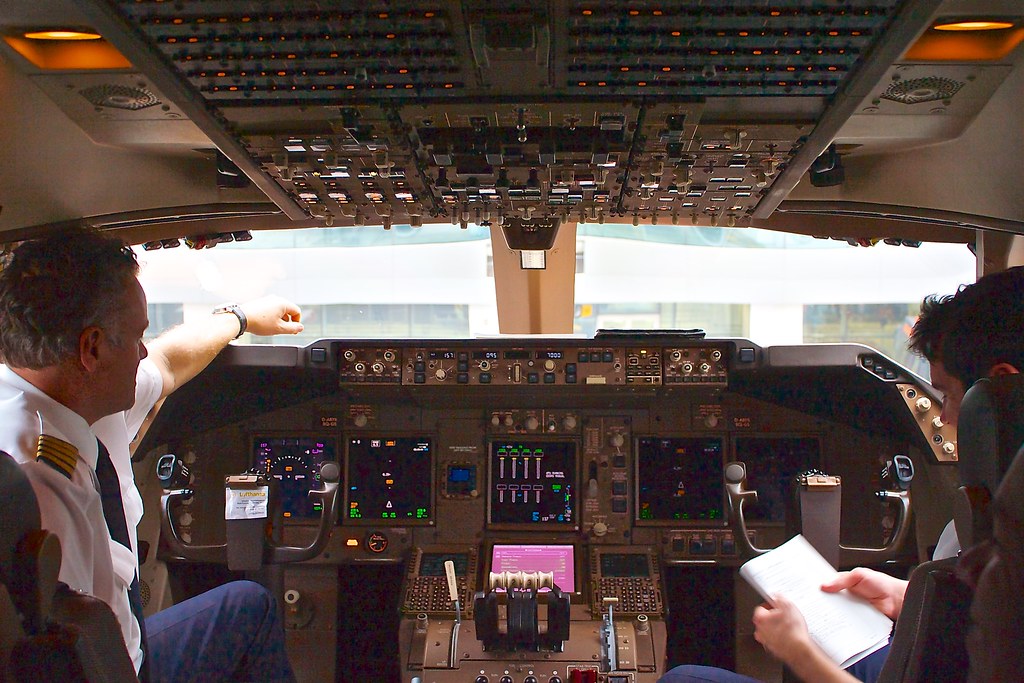
Boeing flight decks, complex systems of interconnected avionics and controls, require meticulous maintenance and periodic upgrades to ensure optimal performance, safety, and operational efficiency. These processes are not simply reactive fixes but are proactive strategies that extend the lifespan and reliability of the aircraft. They are crucial for maintaining the integrity of the flight deck’s capabilities and meeting evolving regulatory requirements.The maintenance and upgrade procedures for Boeing flight decks encompass a wide range of activities, from routine inspections and component replacements to complete system overhauls and the integration of new technologies.
These procedures are designed to maintain the flight deck’s functionality and safety, ensuring that pilots have access to the most current and reliable information and controls.
Maintenance Procedures
Maintaining the integrity of a Boeing flight deck involves a structured approach to inspections, repairs, and replacements. Regular inspections identify potential issues early, preventing more significant and costly problems down the line. These inspections are carried out by trained technicians, who adhere to stringent procedures Artikeld in the aircraft’s maintenance manuals. Specific maintenance schedules are developed for each component, taking into account factors such as usage patterns, environmental conditions, and component specifications.
These schedules ensure that critical components are inspected and serviced at the appropriate intervals, maximizing safety and reliability.
Upgrade Procedures
Flight deck upgrades are critical for adapting to evolving aviation standards, technological advancements, and operational requirements. These upgrades are not merely cosmetic changes but involve significant modifications to the flight deck’s architecture, hardware, and software. The process necessitates careful planning, meticulous execution, and adherence to stringent safety protocols. Upgrading an aircraft’s flight deck requires extensive preparation, including detailed design specifications, component selection, and a robust testing regime.
Costs and Timelines
The costs and timelines associated with maintenance and upgrades vary significantly depending on the specific procedures involved. Routine maintenance tasks typically have shorter timelines and lower costs, whereas significant upgrades can extend over several months and involve substantial expenditures. Factors such as the complexity of the upgrade, the availability of specialized technicians, and the specific aircraft model influence the overall costs and duration.
Examples include the installation of new navigation systems, the integration of advanced cockpit displays, or the implementation of new safety features. These factors contribute to the total cost and timeline.
Importance of Maintenance and Upgrades for Operational Efficiency
Maintaining and upgrading flight decks directly impacts operational efficiency. Proper maintenance ensures the reliable operation of the flight deck, minimizing downtime and increasing aircraft availability. Upgraded flight decks can enhance pilot performance, improve navigation accuracy, and streamline various operational tasks. This leads to increased operational efficiency, reduced fuel consumption, and a positive impact on profitability.
Typical Boeing Flight Deck Upgrade Steps, Buzzing about boeing flight decks
- Assessment of Current System: A comprehensive analysis of the existing flight deck system is conducted to identify areas requiring upgrades and assess the feasibility of different upgrade options.
- Planning and Design: A detailed upgrade plan is created, including the selection of new components, the design of the integration process, and the development of a detailed schedule.
- Component Procurement: Appropriate components are procured from authorized suppliers to ensure compatibility and quality standards.
- Installation and Integration: The new components are installed and integrated into the existing flight deck system, adhering to strict safety protocols.
- Testing and Verification: The upgraded system is rigorously tested to ensure functionality, safety, and compliance with regulatory standards.
- Documentation and Training: Detailed documentation is created for the upgraded system, and pilots receive training on the new functionalities and procedures.
| Step | Description | Timeline (Estimated) | Cost (Estimated) |
|---|---|---|---|
| Assessment | Evaluate existing system | 1-2 weeks | $10,000 – $20,000 |
| Planning & Design | Develop upgrade plan | 2-4 weeks | $20,000 – $50,000 |
| Procurement | Acquire new components | 2-6 weeks | $50,000 – $200,000+ |
| Installation | Install new components | 2-8 weeks | $50,000 – $200,000+ |
| Testing & Verification | Rigorous testing | 2-4 weeks | $10,000 – $50,000 |
| Documentation & Training | Documentation and pilot training | 1-2 weeks | $5,000 – $20,000 |
Illustrative Examples
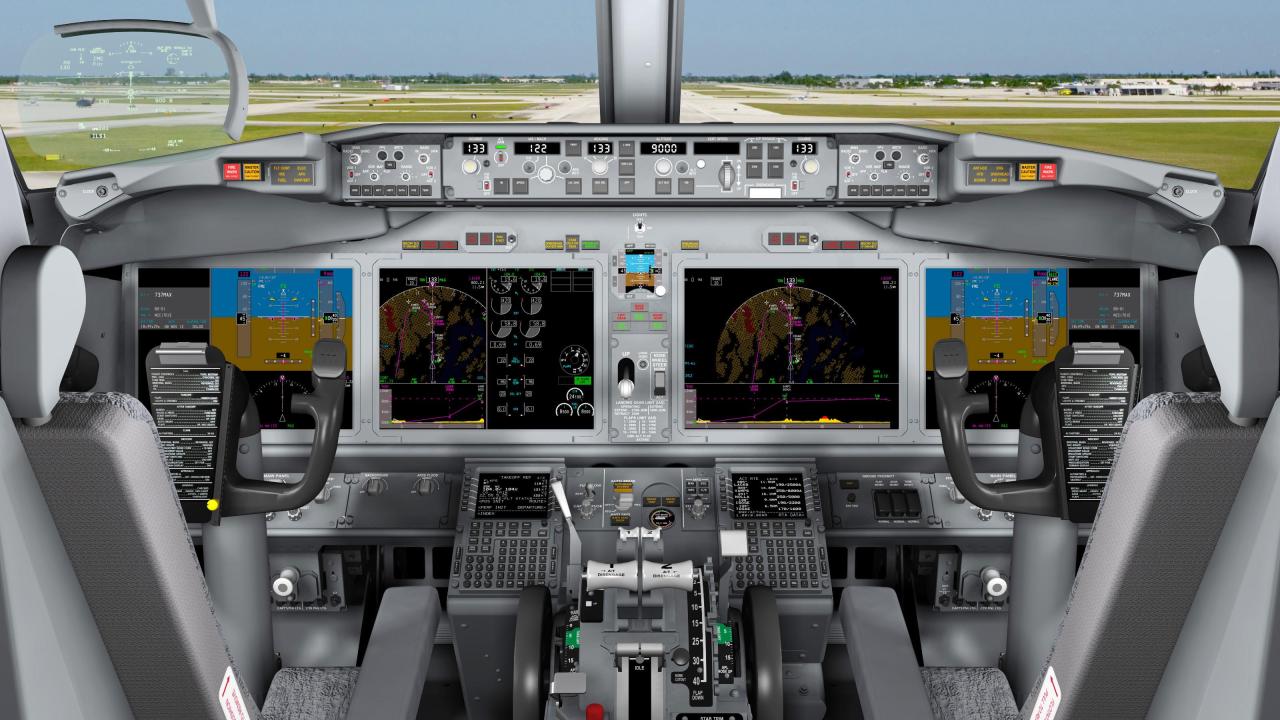
Boeing flight decks represent a fascinating evolution of aviation technology. From the early days of manual controls to the sophisticated automation of today’s models, the pilot’s experience has been dramatically reshaped. This section dives into specific examples, highlighting key features, functionalities, and the impact of technology on the pilot’s workflow.
Everyone’s buzzing about the new Boeing flight decks, and it got me thinking about all the cool new restaurants popping up. Speaking of which, Bobby Flay’s new Mesa Grill location just opened on the strip, bobby flays mesa grill opens on the strip , which is super exciting. The updated flight decks are definitely impressive, though, and I’m eager to see how they’ll impact the industry.
The Boeing 787 Dreamliner Flight Deck
The Boeing 787 Dreamliner’s flight deck showcases a significant shift toward a more integrated and intuitive design. This is a departure from previous models, focusing on enhanced ergonomics and streamlined workflows. Its glass cockpit, incorporating large, high-resolution displays, provides pilots with a comprehensive view of critical aircraft systems and data.
Integration of Automation in the 777X Flight Deck
The 777X exemplifies the advanced level of automation in modern Boeing flight decks. The enhanced automation suite allows pilots to focus on higher-level tasks while the aircraft’s systems handle many routine procedures. For instance, the aircraft’s advanced flight control systems take over control during certain phases of flight, freeing the pilots for other tasks. This reduces pilot workload and allows for increased efficiency.
Improved Pilot Workflow through Enhanced Display Technology
The integration of advanced avionics and display technology significantly enhances the pilot’s workflow. The use of synthetic vision systems on the 787, for example, provides a more intuitive and realistic view of the flight path and surroundings. This allows pilots to maintain situational awareness more effectively, especially in challenging conditions like low visibility. It also reduces pilot workload and improves overall safety.
History and Development of the Boeing 737 Next-Generation Flight Deck
The Boeing 737 Next-Generation flight deck represents a significant evolution in the history of the 737 family. The 737NG incorporated a more modern glass cockpit, a departure from the earlier mechanical systems. This evolution included significant improvements in the displays, flight controls, and overall aircraft performance. It marked a shift towards digital displays, enhancing situational awareness and pilot workflow.
The integration of these systems resulted in a more intuitive and user-friendly flight deck. This improvement led to reduced pilot workload, improved efficiency, and increased safety. The 737NG’s flight deck’s design is a foundational element in the development of subsequent 737 models.
Closing Summary
In conclusion, the Boeing flight deck represents a fascinating blend of technological innovation, rigorous training, and unwavering commitment to safety. From the initial designs to the incorporation of automation and advanced displays, the flight deck has undergone a remarkable transformation. As we look to the future, it’s clear that Boeing will continue to push the boundaries of aviation technology, ensuring both safety and efficiency for years to come.
General Inquiries
What are the primary materials used in constructing Boeing flight decks?
Modern Boeing flight decks often utilize high-strength, lightweight composites for structural components, coupled with durable metals for critical parts. Specific materials vary based on the model and intended use.
How do Boeing flight deck designs address ergonomic concerns for pilots?
Boeing flight decks are designed with ergonomics in mind, incorporating adjustable controls, optimized display placement, and thoughtful layouts to minimize strain and fatigue for pilots during extended flights.
What is the typical timeframe for a major Boeing flight deck upgrade?
The timeframe for a major Boeing flight deck upgrade can vary significantly depending on the scope of the project, available resources, and the specific aircraft model. It can range from several months to a year or more.
What are some common concerns expressed by pilots regarding modern Boeing flight decks?
Pilot concerns regarding modern Boeing flight decks often center around the complexity of advanced systems, the potential for automation failures, and the need for ongoing training to maintain proficiency.

